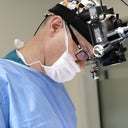When considering a revision, it's important to look at *everything* that bugs you about the current nose. You only mentioned the asymmetry, and you only posted that frontal view, but it seems to me that the lower half of your nose is still rather wide, and the lower part of the tip seems to droop. If those are true features that are present on the profile and three-quarter views, then they should be addressed as well. A good surgeon would be able to let you know, as accurately as he can, how much improvement is most likely in his hands. We can never be 100% certain about it, but there are features that are more predictable to correct than others, and a good surgeon would, should, decline to operate if he thinks that he can only make an improvement too small to be worth having the surgery.






